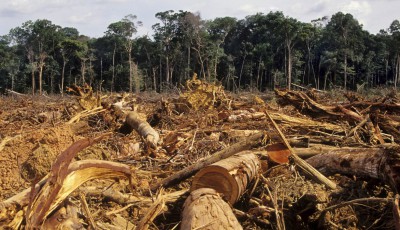Seawater dents delta rice production
 By Paul Brown
By Paul Brown
LONDON, 4 February, 2017 – Urgent action is being called for to prevent salt intrusion causing severe damage to rice production and loss of drinking water in Bangladesh and Vietnam,
Sea level rise, combined with the floods and waterlogging caused by cyclones and typhoons, is threatening large areas of land that is currently highly productive.
Unless counter measures are taken to stop the levels of salt rising and to develop more salt-resistant strains of rice, then both nations will increasingly struggle to feed their rising populations, say the World Bank and the Norwegian Institute of Bioeconomy Research (NIBIO).
Their reports also say there will be mass migration away from the affected areas.
Dr Udaya Sekhar Nagothu, international co-ordinator for the ClimaViet project, says: “Saline levels in soils and irrigation waters in coastal areas are steadily increasing, It is vital that something is done about it before the situation gets out of hand.”
Bangladesh and Vietnam are already being affected by sea level rise, and NIBIO is working with local governments in the Vietnamese delta regions to try to reduce the impacts.
One of the most helpful solutions would be to develop more salt-resistant varieties of rice, but it is expensive to produce the required quantities of seed, and money is short.
Declining rice production
According to the World Bank, salinity issues in Bangladesh will most probably lead to significant shortages of drinking water and irrigation by 2050.
It is also estimated that increased soil salinity, both in coastal and inland areas, may result in yields from rice production declining by 15.6% in the next 30 years, significantly reducing the income of the affected farmers.
In addition to soil salinity, Vietnam also experiences strong storm surges, rising temperatures and variability in the seasonality of rainfall, which add to the stress on crops and soils.
“Due to their extensive coastline and many river deltas, countries like Bangladesh and Vietnam are hotspots for climate change impacts such as sea-level rise and salt water intrusion,” says Dr. Nagothu, who is based at NIBIO.
“High levels of salt in agricultural soil or irrigation water make it difficult for salt-sensitive rice plants and other crops to absorb water and necessary nutrients. As a result, plant growth is suppressed and crop yields are significantly reduced.”
“As of now, very few seed varieties on the market
are able to tolerate the high salt levels that
farmers in these regions are experiencing”
Farmers in Vietnam’s Red River and Mekong deltas are already losing income because of salt. In some regions, rice production has now been abandoned in favour of shrimp cultivation in ponds, as brackish-water shrimp varieties tolerate higher salt levels than most rice varieties.
In the Red River delta, salt water can intrude 30-40 km inland, followed by high water levels in the riverbeds and increased sedimentation in canals and flooded plains.
During the dry season, seawater moves even further inland because of the lack of fresh water in the canals. So rice paddy fields are exposed to high salinity levels, making large tracts of productive land unfit for crop cultivation.
The situation in southern Bangladesh, where various measures to meet these issues have been tested, is similar.
“In Bangladesh, one successful measure has been an aquifer recharge that collects fresh water during the rainy season for use in the dry season,” Dr Nagothu says.” This, in combination with improved soil management, can greatly benefit agricultural land vulnerable to salt water intrusion.”
But he insists that the development of salt-tolerant varieties of rice and other crops accessible to smallholder farmers is vital.
“As of now, very few seed varieties on the market are able to tolerate the high salt levels that farmers in these regions are experiencing,” he says.
Salt-tolerant varieties
“The salt-tolerant rice varieties developed so far are not good enough to meet the high salinity levels. They are also expensive, and thus unavailable to most smallholder farmers.”
In addition to developing new rice varieties, other possible measures include implementing crop rotation systems, soil salinity management using raised seedbeds, and changes in sowing dates.
According to Dr Nagothu there is a need for several improvements, including: an advance in the science underlying new rice varieties; alternative cropping systems; physical infrastructure to withstand sea-level rise; and ways of increasing production for a growing population.
A more hands-on approach from local policymakers is also necessary, he says. Although they acknowledge the issues at hand, adequate funding is rarely provided for research on the development and extension of salinity management measures.
“Developing new seed varieties is expensive,” Dr Nagothu says. “Without sufficient funding, developing more salt-tolerant rice and other crop varieties is very difficult.” – Climate News Network







